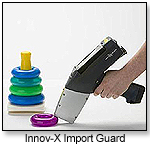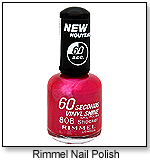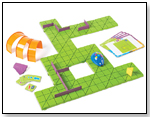|
|
One Year Later: Beyond China, Beyond Lead Phthalates and Other Chemicals Fall Under National Scrutiny
 Last year’s recalls increased consumer awareness and concern about health risks associated with kids’ toys. Concurrently, California passed AB1108 — also known as the California Toxic Toys Bill — in October, making the state the first to ban the use of phthalates in children’s toys. Last year’s recalls increased consumer awareness and concern about health risks associated with kids’ toys. Concurrently, California passed AB1108 — also known as the California Toxic Toys Bill — in October, making the state the first to ban the use of phthalates in children’s toys. In February 2008, Toys “R” Us and Wal-Mart announced stricter guidelines regarding levels of lead, phthalates and other elements in toys and infant products. In August, Congress established, and the President signed, the Consumer Product Safety Improvement Act, lowering the amounts of lead and phthalates that are acceptable in toys. HOW DANGEROUS ARE PHTHALATES?  Phthalates are oil-like chemicals used to make plastics softer and more flexible. Toys are just one of many products that can contain them. According to a 2000 National Institute of Environmental Health Sciences review, detergents, cosmetics (such as nail polish) and wood finishes are sources of human exposure to phthalates. Phthalates are oil-like chemicals used to make plastics softer and more flexible. Toys are just one of many products that can contain them. According to a 2000 National Institute of Environmental Health Sciences review, detergents, cosmetics (such as nail polish) and wood finishes are sources of human exposure to phthalates. The most common exposure used to be through food that had come into contact with plastic packaging containing the phthalate DEHP; however, an NIEHS report notes that the phthalate has since been removed from consumer products. Furthermore, another report explains that DINP (diisononyl phthalate), which is commonly used in toys, is used sparingly in food packaging. Children may be exposed to higher levels of DINP (up to 10–100 fold higher) than adults because infants and small children mouth toys and other articles that contain DINP that can migrate into saliva and be swallowed. DINP is not used in medical devices; therefore intravenous exposure does not occur.
In 2003, a petition made by Public Interest Research Group to the Consumer Product Safety Commission to ban DINP was rejected because there was no demonstrable risk that DINP migrated from vinyl toys in the way that children “mouth” toys. Chris Bryant, managing director of the Chemical Products & Technology Division at the American Chemistry Council, told TDmonthly Magazine that parents do not need to be concerned about phthalates in toys. “DINP ... has been extensively reviewed and deemed to be safe for use in toys by the CPSC and the EU. … Phthalates that have been permanently restricted are not generally found in children’s products.” STATS noted that based on research, “legislation restricting the use of phthalates in toys is going to have virtually no effect on phthalate exposure.” MOVING TO PROTECT CHILDREN Yet, Nsedu Obot Witherspoon, executive director of The Children’s Environmental Health Network (CEHN), told TDmonthly, “We need to start by protecting the most vulnerable populations, the fetus and the young child. The problem is that children are not exposed to one phthalate at a time; they are exposed in mixtures.” Among the CEHN’s recommendations are that children not mouth toys and other objects that are high in phthalates, and that women of childbearing age consider products they are using. Dr. Mary Wolff of the Mount Sinai School of Medicine, in her publication “Inner City Toxicants, Child Growth and Development,” noted that “two classes of industrial chemicals with endocrine-disrupting capability — the phthalates and the alkylphenols — have become widely dispersed in the urban built environment, and significant levels of phthalates are now nearly ubiquitous in the bodies of Americans. Infants and children appear especially susceptible to disruptors, because of their disproportionately heavy exposures and the vulnerability of their still-forming organs.” An October 2007 study prepared by Exponent for the Toy Industry Association focused on the particular phthalate DINP. Researchers found that “current exposure of children to DINP-containing toys would pose a minimal to nonexistent risk of health effects” and that there’s a lack of scientific evidence to contend that DINP causes developmental and reproductive problems at low doses.
While lead and phthalates have made headlines, some organizations believe that other chemicals that may be present in toys are cause for concern. [see Sidebar 1] New federal regulations should help mitigate conflicting regulations across states, although some states may choose to establish further testing protocols. David Campbell, owner of Amazing Toys in Great Falls, Mont., pointed out that some manufacturers are already making toys without phthalates. “There’s no reason to use phthalates, except that it makes manufacturing cheaper, and that’s not a good reason,” he told TDmonthly. Although many parents haven’t shown as much concern as one might expect [see Sidebar 2], Kate Tanner, owner of Kidstop in Scottsdale, Ariz., shared that since the 2007 recalls, toy retailers have had to work hard to gain customers’ trust.  “I think customers have come to expect us to research the toys, and take care of them — that’s our job. We have a binder of letters from manufacturers, educating our customers on what labels to look for and testing being done. … It is children’s safety we are after, and not the bottom line.” “I think customers have come to expect us to research the toys, and take care of them — that’s our job. We have a binder of letters from manufacturers, educating our customers on what labels to look for and testing being done. … It is children’s safety we are after, and not the bottom line.”See TDmonthly’s previous coverage of these and similar issues in PVC Toy Scare: Manufacturing Danger and Plastic Death: Truth, or Scare?  Writer's Bio: Claudia Newcorn has been a freelance writer and editor for over 10 years, after having spent more than a decade in marketing and product management. She writes for both businesses and individual clients, crafting copy, content and advertising. Her articles appear in newspapers, magazines and specialty publications nationwide (www.acornmarketing.com). She is also the author of an award-winning fantasy fiction book, "Crossover," and several published short stories (www.claudianewcorn.com). Read more articles by this author Writer's Bio: Claudia Newcorn has been a freelance writer and editor for over 10 years, after having spent more than a decade in marketing and product management. She writes for both businesses and individual clients, crafting copy, content and advertising. Her articles appear in newspapers, magazines and specialty publications nationwide (www.acornmarketing.com). She is also the author of an award-winning fantasy fiction book, "Crossover," and several published short stories (www.claudianewcorn.com). Read more articles by this author |
| |||||||||||||||||||||||||||||||||||
Disclaimer Privacy Policy Career Opportunities
Use of this site constitutes acceptance of our Terms of Use.
© Copyright 2025 PlayZak®, a division of ToyDirectory.com®, Inc.



